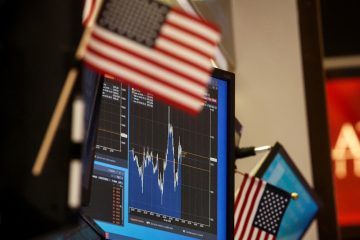General Electric Set to Make The Jetsons a Reality
Fifty years ago, General Electric Company (GE) was the global leader in household appliances, with a research and development (R&D) operation to rival IBM (IBM) or AT&T’s (T) Bell Labs.
At about the same time, The Jetsons convinced us that the 21stcentury would include amazing technology such as robot maids. Not surprisingly, many expected this tech to be invented by GE.
Of course, we all know by now that GE failed to develop this hyper-advanced technology. And I’m convinced that one wrong turn the company made in the 1980s is to blame.
The good news is, GE is finally correcting its 30-year mistake, which will finally allow the company to concentrate on producing the future we all want.
A Flawed Strategy for GE
By the 1990s, GE’s focus was no longer on its appliance business, and it had shut down much of its research and development capability. As a result, household robot advances were left to tiny companies such as iRobot Corporation.
The culprit was GE’s “Neutron Jack” Welch, the CEO from 1981 to 2001. Welch was a fanatical believer in maximizing shareholder value, which he defined with short-term discounted cash flow methods.
He also believed that GE operations must be No. 1 or No. 2 in their industry – if an operation wasn’t, it was quickly removed. Consequently, Welch laid off over 100,000 GE employees and drastically slimmed down the R&D operation. In fact, the nickname “Neutron Jack” reflected Welch’s ability to eliminate employees while leaving valuable assets to be disposed of profitably.
Welch also bulked up GE’s financial services capability, using the company’s AAA rating to maximize funding efficiencies.
But the flaws in Welch’s strategy became apparent after 2000, as GE’s share price and earnings stagnated. Then, in 2008, they were demonstrated most vividly. Welch’s successor, Jeffrey Immelt, was forced to call Treasury Secretary Hank Paulson to bail out GE Capital, as the wholesale funding markets on which it depended were no longer working.
GE’s Future Looks a Lot Like Its Past
Today, the cost of slimming down the financial services business is proving considerable for shareholders. In the most recent quarter, a $ 14-billion write-off caused a loss of $ 1.35 per share for the quarter. The disposal will take some time, too, as GE plans to slim its balance sheet down to under $ 100 billion in financial services assets by 2018.
GE does plan to return some $ 30 billion to shareholders by means of dividends, share buybacks, and distribution of the remaining shares in its consumer finance business, Synchrony Financial. But the share buybacks are unfortunate. As I’ve written before, retail investors get very little benefit from these, as they’re best for executives with stock options.
Still, even without the extra goodies, GE boasts a dividend yield of 3.7%, and Immelt has promised that this will rise over the next three years.
Once it has disposed of its financial businesses, GE’s core will consist of medical services, aircraft engines, and power generation equipment, as well as some useful extras like a $ 3-billion lighting business that stands to benefit from the current move towards more expensive LED lightbulbs.
One commentator described the non-financial GE as “boring,” but that simply reflects journalists’ lack of comprehension of engineering businesses. GE was always strongest as a superlative engineering company with a high R&D component and a long-term focus on its markets and businesses. If the return to its roots leads GE to produce some superior household robots, so much the better!
Meanwhile, GE’s newly engineering-focused stock is an excellent holding for income-oriented investors, much better than when the group was fooling around in finance.
Good investing,
Martin Hutchinson

